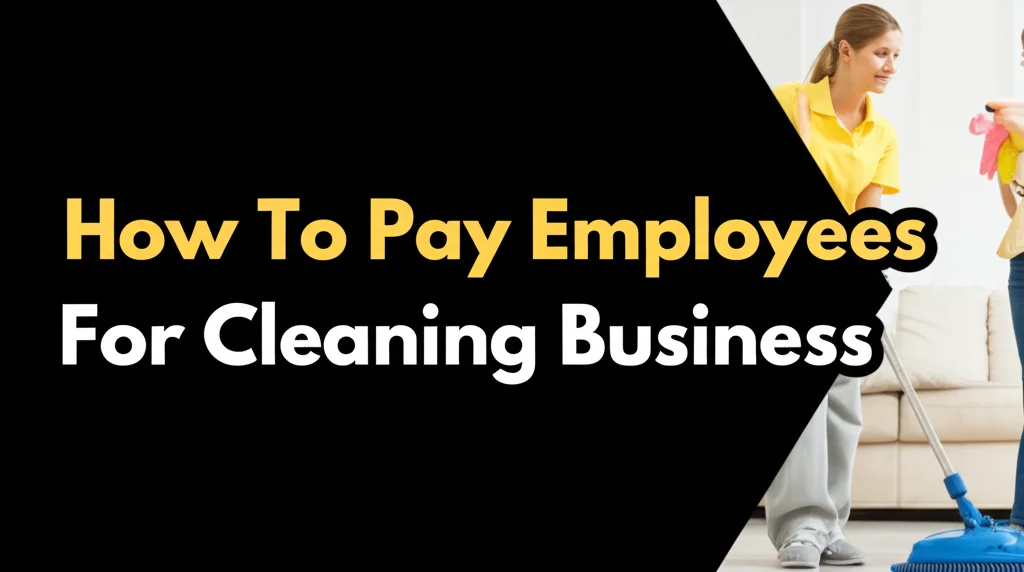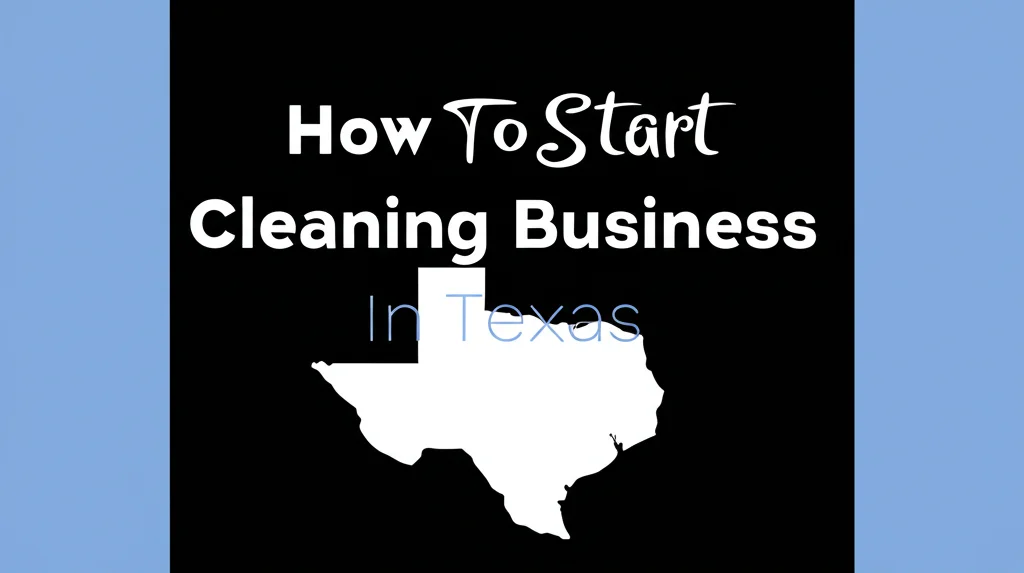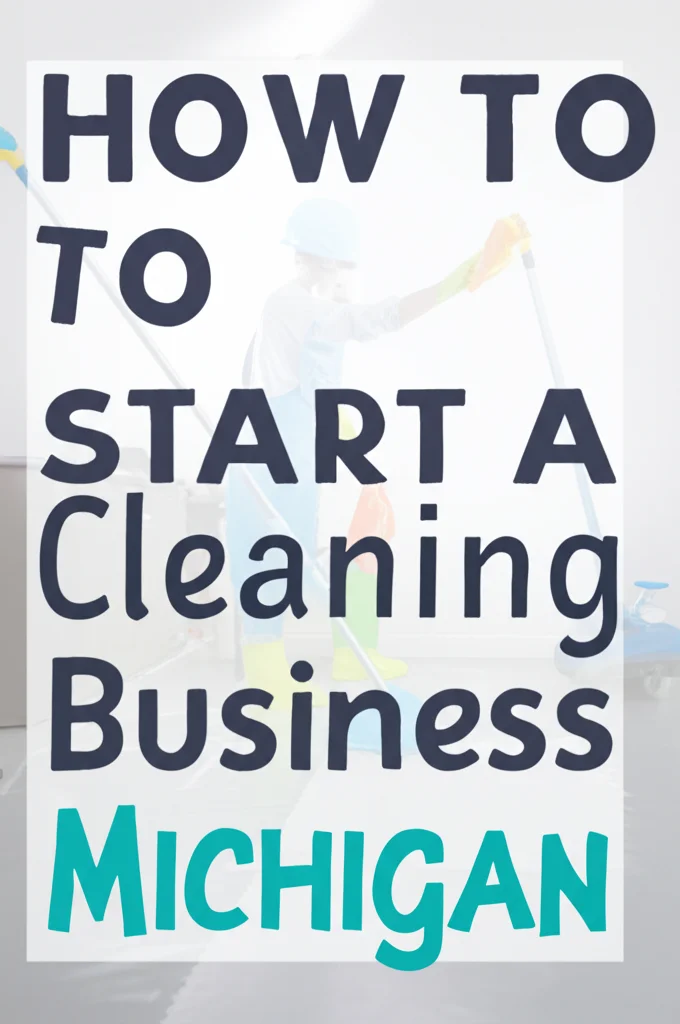· Business Management · 8 min read
How To Pay Employees For Cleaning Business

Paying Your Cleaning Crew: A Comprehensive Guide
Running a successful cleaning business involves more than just providing excellent service. It also means managing your finances and, crucially, paying your employees correctly and on time. Choosing the right payment method for your cleaning staff is a vital decision that impacts your budget, employee satisfaction, and legal compliance. This article will walk you through everything you need to know about how to pay employees for your cleaning business, from understanding different pay structures to navigating payroll services. We’ll cover hourly rates, salaries, payroll taxes, and the best tools to streamline the process.
Quick Answer: You can pay cleaning employees via hourly wages, salary, or a combination. Payroll options include manual calculations, accounting software, or using a dedicated payroll service. Always ensure you comply with federal, state, and local labor laws regarding minimum wage, overtime, and tax withholding.
Takeaway:
- Choose a payment structure (hourly or salary) that aligns with employee roles and responsibilities.
- Understand and comply with all applicable payroll tax requirements.
- Utilize payroll software or services to simplify calculations and ensure accuracy.
Understanding Your Payment Options
Before diving into the specifics, let’s explore the primary ways to compensate your cleaning team. The best option depends on the nature of the work, the employee’s role, and your business’s financial structure. Consider both hourly wages and salaries carefully to determine what works best for your cleaning business.
Hourly Wages: The Most Common Approach
Hourly wages are the most prevalent payment method in the cleaning industry. Employees are paid a fixed rate for each hour worked, making it ideal for roles with fluctuating workloads or tasks. This is particularly suitable for cleaning technicians who move between different client locations and have varying job durations.
- Pros: Simple to calculate, transparent for employees, and easily adjusts to varying workloads.
- Cons: Can lead to overtime costs if employees work over 40 hours a week, requires accurate time tracking.
- Setting an Hourly Rate: Research the average cleaning rates in your area. Factor in experience, skills, and the complexity of the cleaning tasks. Don’t forget to account for payroll taxes and worker’s compensation insurance when calculating your labor costs.
Salary: For Management and Consistent Roles
A salary offers a fixed amount of compensation paid regularly (bi-weekly or monthly), regardless of the hours worked. This is more appropriate for management positions, team leaders, or employees with consistent responsibilities. Salaried employees often have more autonomy and are expected to manage their time effectively.
- Pros: Provides financial stability for employees, simplifies payroll for consistent roles, and can attract higher-quality candidates.
- Cons: May not accurately reflect the actual hours worked, requires careful consideration of responsibilities and workload.
- Determining a Salary: Research industry standards for similar positions in your area. Consider the employee’s experience, skills, and the overall value they bring to your business.
Commission-Based Pay: Incentivizing Performance
While less common, a commission-based pay structure can incentivize employees to secure new clients or upsell services. This involves paying a percentage of the revenue generated from their efforts. It’s best used in conjunction with a base salary to provide income security.
- Pros: Motivates employees to drive sales and revenue growth.
- Cons: Can be unpredictable for employees, requires clear commission structures and tracking.
Navigating Payroll Taxes and Legal Requirements
Paying employees isn’t just about handing them a paycheck. You’re also responsible for withholding and remitting various taxes to federal, state, and local authorities. Understanding these obligations is crucial to avoid penalties and maintain legal compliance.
Federal Taxes: Social Security and Medicare
As an employer, you’re responsible for withholding Social Security and Medicare taxes (FICA) from your employees’ wages. You also contribute a matching amount. These taxes fund Social Security and Medicare benefits for retirees and individuals with disabilities.
- Employer Identification Number (EIN): You’ll need an EIN from the IRS to report and pay these taxes.
- Form W-2: At the end of each year, you must provide each employee with a Form W-2, detailing their earnings and taxes withheld.
State and Local Taxes: Income Tax and Unemployment Insurance
Most states also require you to withhold state income tax from your employees’ wages. Additionally, you’ll need to pay state unemployment insurance taxes, which provide benefits to workers who lose their jobs through no fault of their own. Local taxes may also apply depending on your location.
Minimum Wage and Overtime Laws
Ensure you comply with federal, state, and local minimum wage laws. The federal minimum wage is currently $7.25 per hour, but many states and cities have higher minimum wages. You must also pay overtime at a rate of 1.5 times the regular hourly rate for hours worked over 40 in a workweek. Understanding these laws is vital to avoid legal issues. You can find more information on the Department of Labor website.
Choosing a Payroll Method: Manual vs. Automated
Once you understand your tax obligations, you need to decide how to process payroll. You have several options, ranging from manual calculations to fully automated payroll services.
Manual Payroll: For Very Small Teams
If you have only a few employees, you might consider calculating payroll manually using spreadsheets. However, this is time-consuming, prone to errors, and requires a thorough understanding of payroll regulations.
- Pros: Low cost (initially).
- Cons: Time-consuming, error-prone, and requires significant expertise.
Accounting Software: A Step Up in Efficiency
Accounting software like QuickBooks or Xero often includes basic payroll features. This can streamline the process and reduce errors compared to manual calculations. However, these features may be limited, and you may still need to handle some tasks manually.
Dedicated Payroll Services: The Most Efficient Option
Dedicated payroll services like Gusto, ADP, or Paychex handle all aspects of payroll, including tax calculations, withholdings, payments, and reporting. This is the most efficient and accurate option, especially as your business grows.
- Pros: Saves time, reduces errors, ensures compliance, and provides access to expert support.
- Cons: Involves a monthly or per-pay-period fee.
Streamlining Time Tracking for Accurate Payroll
Accurate time tracking is essential for paying hourly employees correctly. Manual time sheets are prone to errors and can be easily lost or altered. Consider using a digital time tracking system to streamline the process.
Time Tracking Software Options
Several time tracking software options are available, including:
- Clockify: A free time tracking tool with basic features.
- TSheets (now QuickBooks Time): A popular option that integrates with QuickBooks.
- Hubstaff: A comprehensive time tracking solution with features like GPS tracking and activity monitoring.
These tools allow employees to clock in and out electronically, track their hours worked on different projects, and generate reports for payroll processing. This improves accuracy and reduces administrative burden. You can also use these tools to monitor employee productivity and identify areas for improvement.
Staying Compliant: Ongoing Education and Updates
Payroll laws and regulations are constantly changing. It’s crucial to stay informed about these changes to ensure ongoing compliance.
- Subscribe to Payroll Newsletters: Sign up for newsletters from payroll providers or industry associations to receive updates on new laws and regulations.
- Consult with a Payroll Professional: Consider consulting with a payroll professional or accountant to ensure you’re meeting all your obligations.
- Regularly Review Your Payroll Processes: Periodically review your payroll processes to identify areas for improvement and ensure they’re still compliant with current regulations.
Frequently Asked Questions (FAQs)
Q: What is the best way to pay cleaning employees – hourly or salary? A: For most cleaning technicians, hourly pay is best due to varying job times. Salaries are better suited for management or consistent roles. Consider the job duties and workload when making your decision.
Q: Do I need to provide employees with a W-2 form? A: Yes, you are legally required to provide each employee with a Form W-2 by January 31st of each year, detailing their earnings and taxes withheld.
Q: What are the costs associated with using a payroll service? A: Payroll service costs vary depending on the provider and the number of employees. Expect to pay a monthly base fee plus a per-pay-period fee per employee.
Q: How can I ensure accurate time tracking? A: Implement a digital time tracking system to eliminate manual errors and provide a clear record of hours worked.
Q: What if I miscalculate an employee’s pay? A: Correct the error immediately and issue a supplemental paycheck to compensate the employee for the underpayment. Document the error and the correction for your records.
Conclusion
Paying your cleaning business employees correctly and on time is essential for maintaining a positive work environment, attracting and retaining talent, and avoiding legal issues. By understanding your payment options, navigating payroll taxes, and choosing the right payroll method, you can streamline the process and focus on growing your business. Remember to prioritize compliance, stay informed about changing regulations, and utilize technology to improve accuracy and efficiency. Investing in a reliable payroll system is an investment in the long-term success of your cleaning business.
- employee payroll
- cleaning business
- payroll options
- employee compensation
- legal compliance




